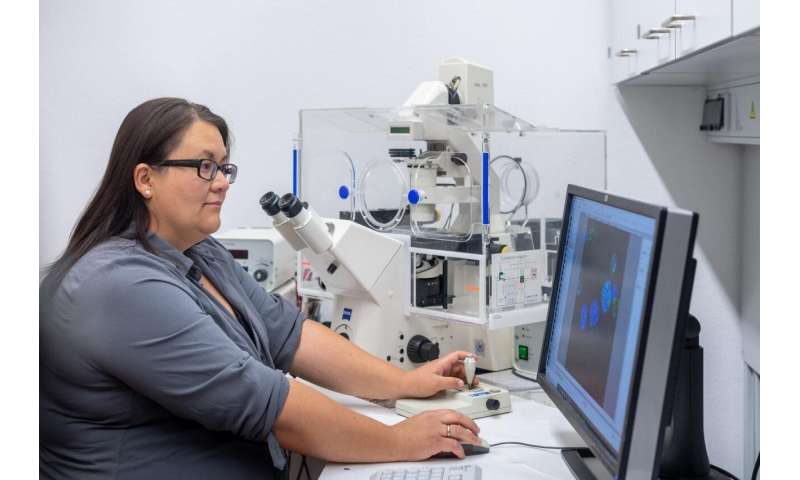
An adenovirus infection can be potentially life-threatening, especially for children after a stem cell transplant. Virologists at the Technical University of Munich (TUM) and the German Research Center for Environmental Health Helmholtz Zentrum München have successfully shown that a previously approved medication used in cancer treatment could help inhibit this virus infection. Due to the special mechanism of action, the virus cannot develop defense strategies.
Human adenoviruses cause conjunctivitis, gastrointestinal illnesses and pneumonia, among other things. In most cases however an infection exhibits no symptoms or only mild symptoms in healthy adults. “Generally speaking, every adult has probably had several adenovirus infections already,” says Dr. Sabrina Schreiner. She works at the TUM Institute of Virology and the German Research Center for Environmental Health Helmholtz Zentrum. In the past human viruses, of which more than 85 different variants are currently known, were not considered to be particularly dangerous.
No medication or vaccine available as yet
However, for individuals with immune system deficiencies the course of the infection can have serious effects or even be fatal. An infection is particularly dangerous for children following a stem cell transplant. In this case the mortality rate for infected patients can be as high as 80 percent.
“We’ve known that adenovirus infections in healthy patients can also cause severe pneumonia ending in death since 2006,” says Schreiner. However, as yet there is still no medication that is specifically effective against adenoviruses, and there is also no vaccine for the general population.
Protein complexes with antiviral effects
Schreiner and her team are investigating how the virus reproduces in the cell. They observed marked changes in what are called PML nuclear, complexes made up of several proteins within the cell, in cases of adenovirus infection.
These structures, which are otherwise round, dissolve and form elongated fibrils. “We assume that the PML bodies have an antiviral effect,” says Schreiner. “The viruses destroy the round structures of the protein complexes and then make use of this cellular manipulation for their own reproduction.”
Body’s own defenses strengthened
The scientists noticed in cancer patients that the structures of the PML bodies were also dissolved. But when the patients were treated with arsenic trioxide (ATO) the round structures reformed. “ATO is a known active ingredient which has already been approved and is currently in clinical use for leukemia patients,” Schreiner explains.
The researchers tested the efficacy of ATO in cell cultures infected with adenoviruses. Here too the PML bodies once again reformed into round structures and the virus concentration dropped. “So we can actually restore the endogenous antiviral factories which then fight the virus,” says Schreiner.
No direct attack
Following laboratory testing, in the next step the medication will be used on patients with adenovirus infections. The virologists are in close contact with pediatricians in Munich hospitals. Since the medication has already been approved, it can be used in treatment immediately. “This compound contains arsenic, but there are no cytotoxic side-effects in the concentrations in which it is used and for which it has already been approved,” says Schreiner.
The special thing about this medication is that it affects the cell’s own structures instead of directly attacking the virus. “Viruses often become resistant to medications which attack them directly,” explains Schreiner. “For example they can mutate in such a way that they are no longer recognized by the medication. But in this case, since the virus has no direct interaction with the active ingredient, it can’t develop any defense mechanisms.”
Technical University Munich

